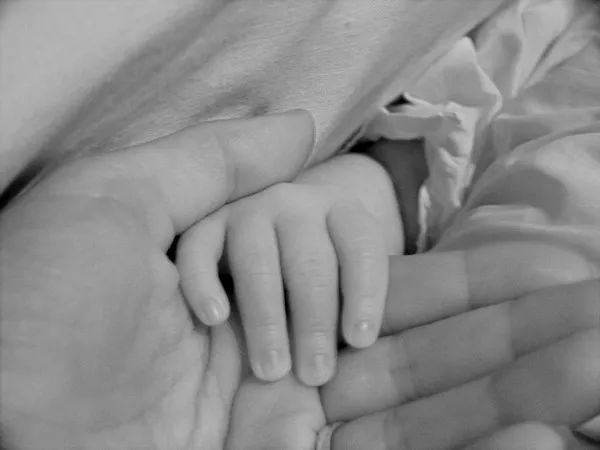Bilirubin is a yellow pigment found in the blood. It is produced when the body breaks down old red blood cells. In newborns, bilirubin levels are particularly important to monitor. High levels can lead to jaundice, a common condition in newborns. This article discusses the normal range for bilirubin in newborns and what it means for their health.
What Is Bilirubin?
Bilirubin comes from the breakdown of hemoglobin. Hemoglobin is the protein in red blood cells that carries oxygen. When red blood cells age or get damaged, they are broken down by the liver and spleen. This process produces bilirubin. The liver helps process bilirubin so it can be excreted from the body.
Bilirubin exists in two forms: unconjugated (indirect) and conjugated (direct). Unconjugated bilirubin is not water-soluble. It travels through the bloodstream to the liver, where it is converted into conjugated bilirubin. This form is water-soluble and can be excreted through urine or stool.
Normal Bilirubin Levels in Newborns
The normal range for bilirubin in newborns varies depending on their age and the timing of the measurement. Generally, bilirubin levels are measured in milligrams per deciliter (mg/dL). Here are the normal ranges based on age:
First 24 hours of life: Less than 5 mg/dL
1 to 2 days old: Up to 12 mg/dL
3 to 5 days old: Up to 15 mg/dL
More than 5 days old: Up to 2 mg/dL for total conjugated bilirubin
These values may vary slightly depending on the healthcare provider and the testing methods used.
Factors Influencing Bilirubin Levels
Several factors can influence bilirubin levels in newborns. Understanding these factors can help parents and caregivers monitor their baby’s health.
Gestational Age
Premature infants are at a higher risk for elevated bilirubin levels. Their livers may not be fully developed, making it harder for them to process bilirubin efficiently. Full-term infants typically have lower bilirubin levels.
Birth Weight
Low birth weight infants may also have higher bilirubin levels. They may experience more stress during birth, leading to increased red blood cell breakdown.
Feeding
Breastfeeding can impact bilirubin levels. Babies who are not feeding well may have higher bilirubin levels. This is often seen in breastfeeding jaundice. Breastfed infants may not receive enough calories or hydration initially, causing bilirubin to rise.
Conversely, formula-fed infants may have lower bilirubin levels due to better caloric intake and hydration.
Blood Type
The blood type of the baby and the mother can affect bilirubin levels. If the mother has a different blood type than the baby, this can lead to hemolytic disease. In this condition, the baby’s red blood cells are destroyed more rapidly, increasing bilirubin production.
Infections
Infections can also elevate bilirubin levels. They can lead to increased red blood cell breakdown or impaired liver function. Healthcare providers may monitor bilirubin levels closely in infants showing signs of infection.
Monitoring Bilirubin Levels
Monitoring bilirubin levels is a standard practice for newborns. Healthcare providers typically check bilirubin levels before the baby leaves the hospital. This is especially true for infants who are premature, low birth weight, or have risk factors for jaundice.
If a baby shows signs of jaundice, such as yellowing of the skin and eyes, further testing may be needed. The provider may perform a blood test to measure bilirubin levels. In some cases, a transcutaneous bilirubinometer may be used. This device estimates bilirubin levels through the skin.
Treatment for High Bilirubin Levels
If bilirubin levels are too high, treatment may be necessary. There are several options for managing elevated bilirubin levels.
Phototherapy
Phototherapy is a common treatment for jaundice. It involves placing the baby under special blue lights. These lights help break down bilirubin in the skin. The treatment is safe and effective. It usually requires a few days in the hospital, but some infants can receive phototherapy at home.
Exchange Transfusion
In severe cases, an exchange transfusion may be needed. This procedure involves removing some of the baby’s blood and replacing it with donor blood. This helps lower bilirubin levels rapidly. Exchange transfusions are rare and typically only used in severe cases.
Increased Feeding
Encouraging frequent feeding can help lower bilirubin levels. More feedings can help flush bilirubin out of the baby’s system. Parents should follow their healthcare provider’s guidance on feeding schedules.
Long-Term Implications of High Bilirubin Levels
While mild jaundice is common and usually harmless, high bilirubin levels can pose risks. If left untreated, severe jaundice can lead to kernicterus. Kernicterus is a serious condition that can cause brain damage. It occurs when high bilirubin levels affect the baby’s brain. This can lead to long-term developmental issues.
Parents should monitor their baby for any signs of jaundice. If they notice yellowing of the skin or eyes, they should contact their healthcare provider promptly. Early intervention can prevent complications.
See also: Why Bilirubin Levels Increase In Newborns
Conclusion
Understanding bilirubin levels is essential for the health of newborns. Normal ranges vary by age, and monitoring is crucial. Factors like gestational age, feeding, and blood type can influence bilirubin levels.
Parents should be aware of jaundice and its signs. Regular check-ups and communication with healthcare providers can ensure timely intervention if needed. With proper care and monitoring, most newborns with elevated bilirubin levels recover without complications.
This knowledge helps parents navigate the early days of their baby’s life with confidence. They can provide the best care possible, ensuring a healthy start for their little ones.
Related topics:


